If one has an antique (or converted) roll-top desk and an antique (usually restored) wooden swivel chair, the only missing component of one’s home office suite (assuming one was not into antique typewriters and cash registers) would be an antique wooden filing cabinet. In the days before thumb drives and memory sticks, our ancestors had to keep voluminous paper files in brown folders and brown envelopes, which were in turn kept in steel filing cabinets. And their ancestors before them did much the same thing, but in wooden filing cabinets.
For some reason not many of these wooden filing cabinets seem to exist today. Either not many of them were made in the first place, which I find difficult to believe, or perhaps only few survived the war, when most must have burned inside the office buildings that got bombed during the war’s final months. Or, conjecturally, some might have had its narra hardwood panels broken up to be used as house-building materials in post-war reconstruction. Or, sadly, it’s conceivable that they might have been used as firewood in those years of deprivation.In any case, enough have survived for the antique police to conduct its own survey. Unlike with roll-top desks and swivel chairs, there is much less variety here, for how radical can a furniture designer get in creating a cabinet of drawers to hold files? Here is a typical one, the first that I ever photographed many years ago, in the shop-office of a prominent antique dealer.
As might have been expected, it has four drawers, just like the millions of steel filing cabinets in the offices of the world. In fact, someone with a warped sense of chronology might assume that the design of this early 20th century antique was based on its late 20th century counterpart. Like the latter, this example also has small brass holders for slip-in drawer labels. Where it outdoes everyone else is in its scallop-shaped wooden handles.
As the dealer refused to part with this piece, saying that she was still using it for the conduct of her business, I sour-grapingly consoled myself with the fact that the drawers were stuck and could not be closed properly, and resolved to find a better example to hopefully acquire.
Not long after, I spotted another example with another dealer. While it did not have the scallop-shaped handles that the previous specimen had, it had its presumably original brass handles, and was in excellent condition.
It however had two disadvantages – it was, in my mind, rather expensive, and more to the point, already sold! A sad reminder that “expensive” is highly relative and personal.
In the succeeding months of searching, my stereotypes of what an antique wooden filing cabinet should look like were frequently challenged. Another dealer offered this strange-looking four-level six-slot creation, with three normal drawers below, and three lateral file slots above.
Perhaps coming from the same design school, one that was being offered for sale still in its circa 1910 house had fully twelve drawers, nine of which were lateral.
I wonder what sort of files were kept in these. (Or maybe it was really a morgue for pets?)
The same old house had an equally old library card cabinet. Not very useful nowadays, especially if one’s remaining paper files were still on regular bond paper. They can’t even accommodate compact discs, unfortunately.
An antique dealer offered a four-level cabinet, where the heights of the drawers decreased as one moved from top to bottom, and with the top level covered by a drawbridge-type door.
There was another filing cabinet of sorts, with lateral slots to shoot folders and envelopes into, now holding parts of a porcelain collection.
Both of these last two were too quirky for my filing purposes, I felt.
Another dealer had in stock a short but wide four-drawer, ready for restoration.
But despite its presumed uniqueness, it was just too artless and plain for me.
I came across a rather normal-looking four-drawer piece in a large antique shop in the city.
This however, was a newly-made reproduction from Indonesia, in teak. As such, it was reasonably priced, but I held out in case I came across an antique. Just a few steps away, the dealer’s office had this three-drawer, still with its original brass pulls.
However, this was still in use by the dealer, and therefore not for sale. Where’ve I heard that before?
I also found another three-drawer with another dealer, actually two drawers and a small cabinet door beneath.
I passed on this one too, holding out for that elusive, antique, normal-looking four-drawer.
Some time later, I got a call from the dealer who previously had what I thought was an expensive filing cabinet but that was in fact already sold. She told me that she had another one, just arrived and still available for sale.
It didn’t have the brass handles of her earlier piece, because, as she explained, when she got it, it didn’t have its original handles at all any longer. In the course of restoration, she replaced them with squarish ones newly-made in narra, to match the rest of the piece.
I then asked if these could be replaced with somewhat more authentic-looking scallop-shaped pulls, to which she said, of course – anything was possible. So within a few days, my first ever antique filing cabinet was ensconced in my office, easily blending in with the rest of my antique furniture.
Later on, when I decided to have an antique-style roll-top desk commissioned from our usual antique furniture restorer (see previous article), it not only came with a custom-made combination-credenza-table-and-tall-bookcase, but also a large four-drawer all-narra mother-of-all-filing-cabinets.
In the above photo, taken in what was my office at that time, it appears to be smaller than its actual size, topped by Venetian-antique-style picture frames and partnered with a swivel chair for visitors, but don’t be fooled – it’s way over five feet tall, and packs a mean punch (and more).
In due course, my brother the doctor needed a wooden filing cabinet too. Word was sent from another antique dealer that a formidable five-drawer (!) piece in narra had just become available. One Saturday morning, I made my way to her workshop just outside the city, and saw this.
While it was indeed a five-drawer in narra, I felt that it was too utilitarian and ungainly. When my brother saw the photos, he was even less charitable than I was.
Some time later, I spotted a four-drawer in an antique shop.
But the high price, the poor restoration, and those side-mounted drawer locks were turn-offs to my brother and me.
Instead, as I moved domiciles (across three countries in the space of less than a year and a half), my brother got the large custom-made four-drawer, which now does faithful service in his home office.
Having a new office is a convenient excuse for compulsive antique police to acquire new pieces (even though there might be similar ones already available in one’s personal inventory). I thought that this piece, in the showroom of our restorer (and still with its fixed-asset inventory tag from what was presumably the pre-war Bank of the Philippine Islands), would look great in my new work space.
Not only does it now carry out its storage function as intended, but it also served as a convenient and appropriate pedestal for a small vintage Nativity scene during the Advent and Christmas seasons
and a small antique Nazareno (shown with and without its matching urna) during Lent.
Even though my family’s antique filing cabinet search was now officially over, diligent antique dealers would occasionally let us know when relevant pieces surfaced. The source-dealer of our first ever filing cabinet had this interesting three-drawer available.
And another prolific antique dealer who had supplied us with many pieces over several years offered us this one, with vertical brass handles and Art Deco-style tiered legs.
As both of these were in very good condition and were very reasonably priced as well, there was really no other choice. They now stand side-by-side in the corner of our home, hiding away a large volume of books, magazines, toys, and other miscellaneous home detritus.
If you come across a reasonably-priced antique filing cabinet in fair condition, take the antique police’s advice: try not to pass it up. They’re rare, very useful, and quite characterful, and besides, your home or work clutter deserves only the best hiding place that you can get for it.
Originally published on 12 July 2009. All text and photos copyright ©2009 by Leo D Cloma. The moral right of Leo D Cloma to be identified as the author of this work has been asserted.
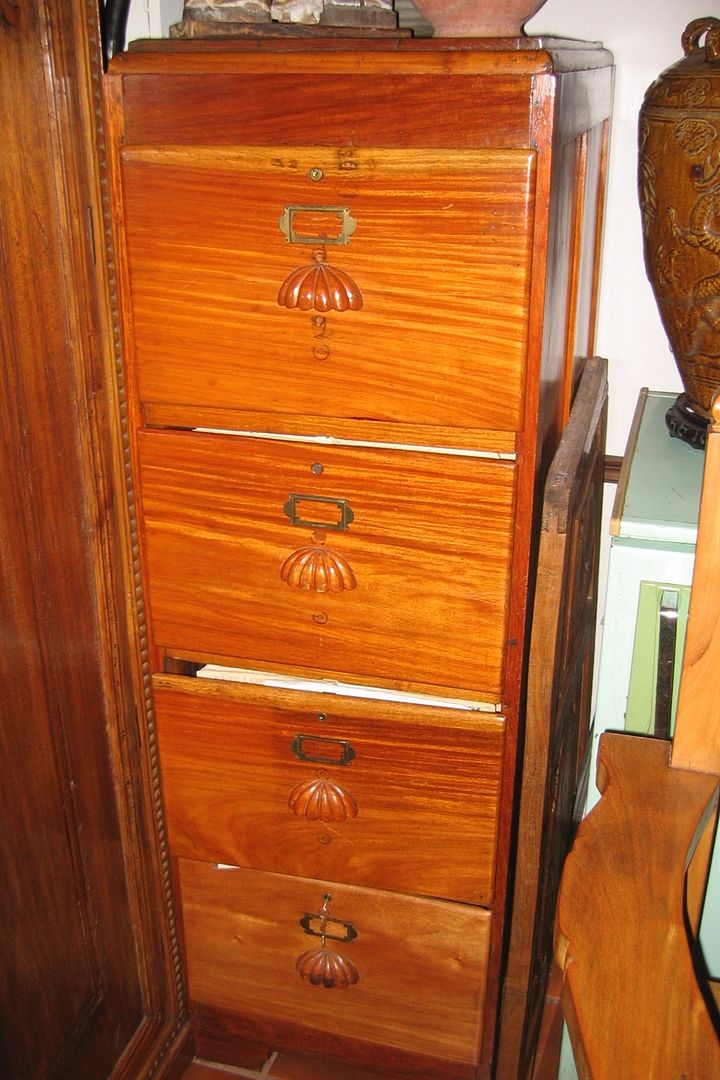
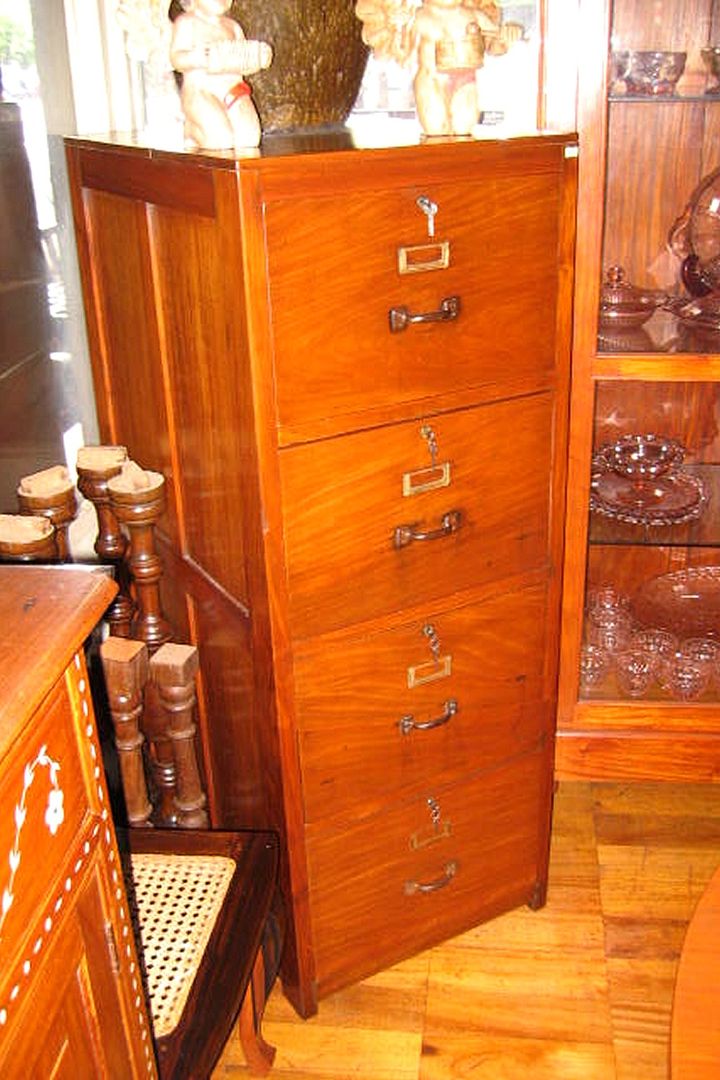
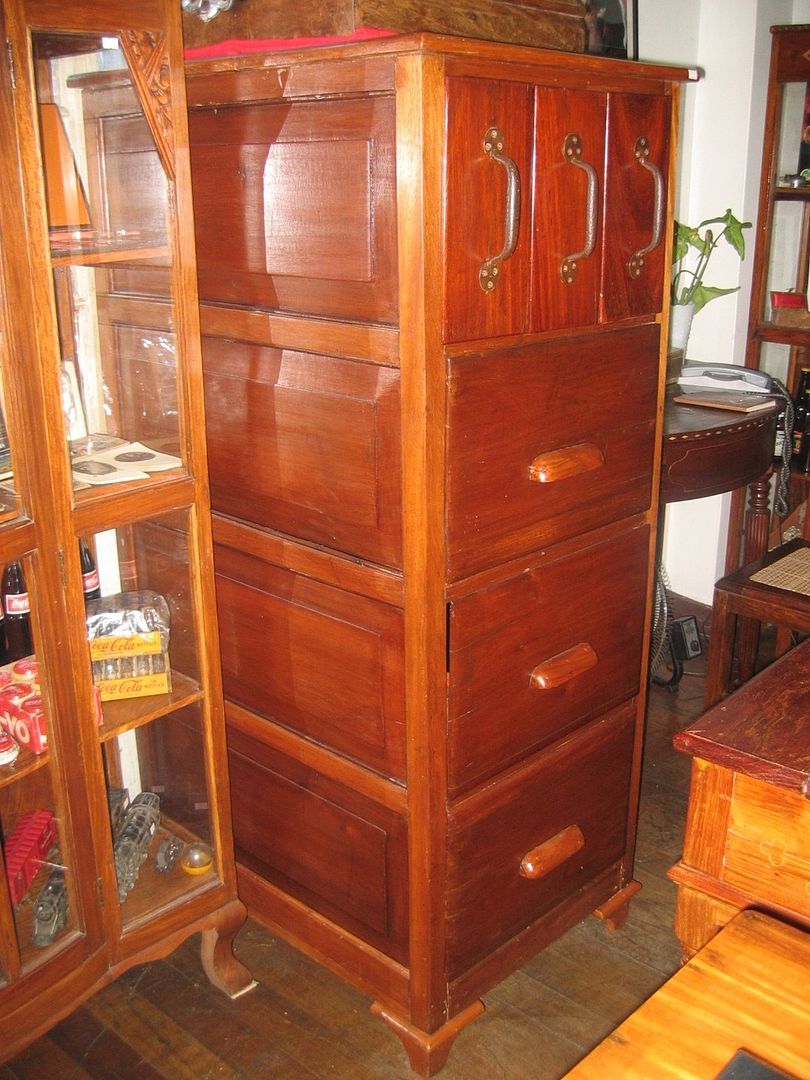
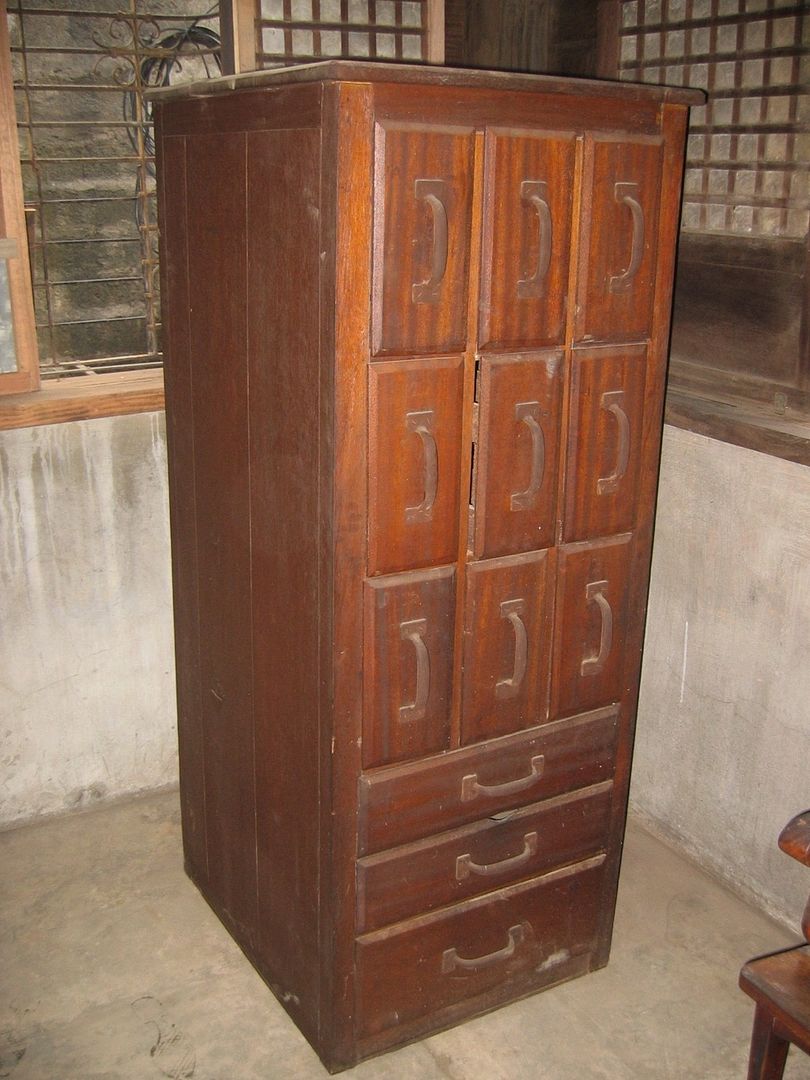
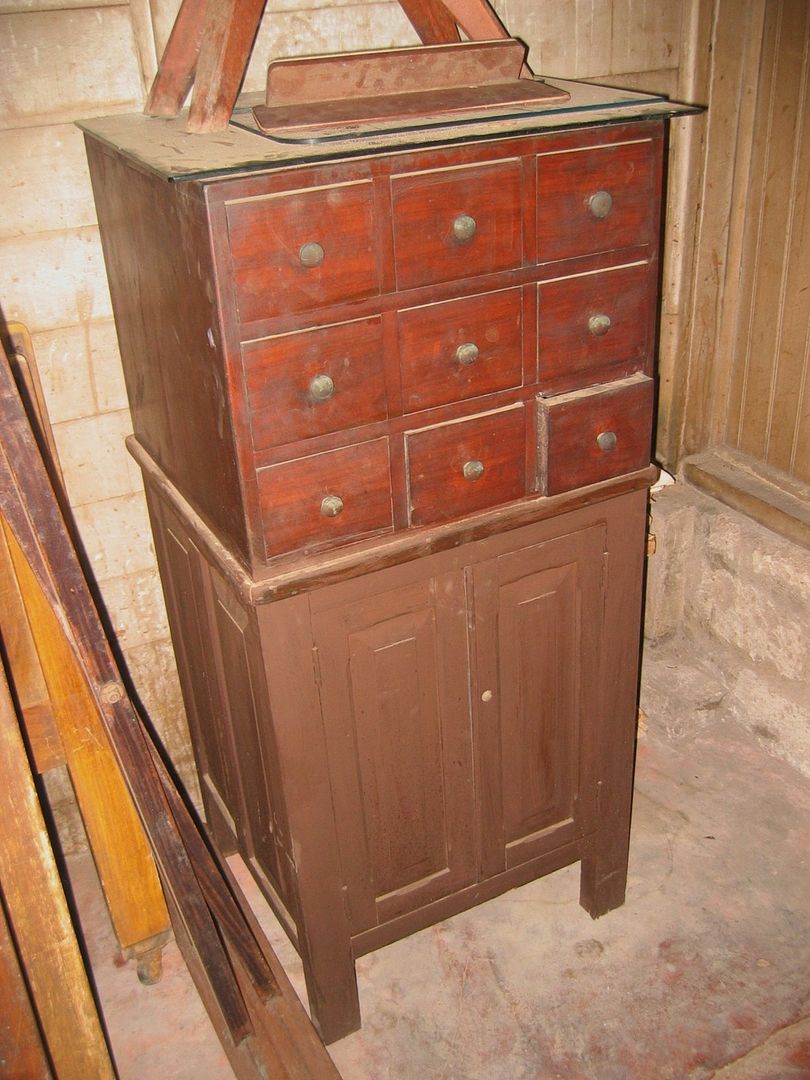


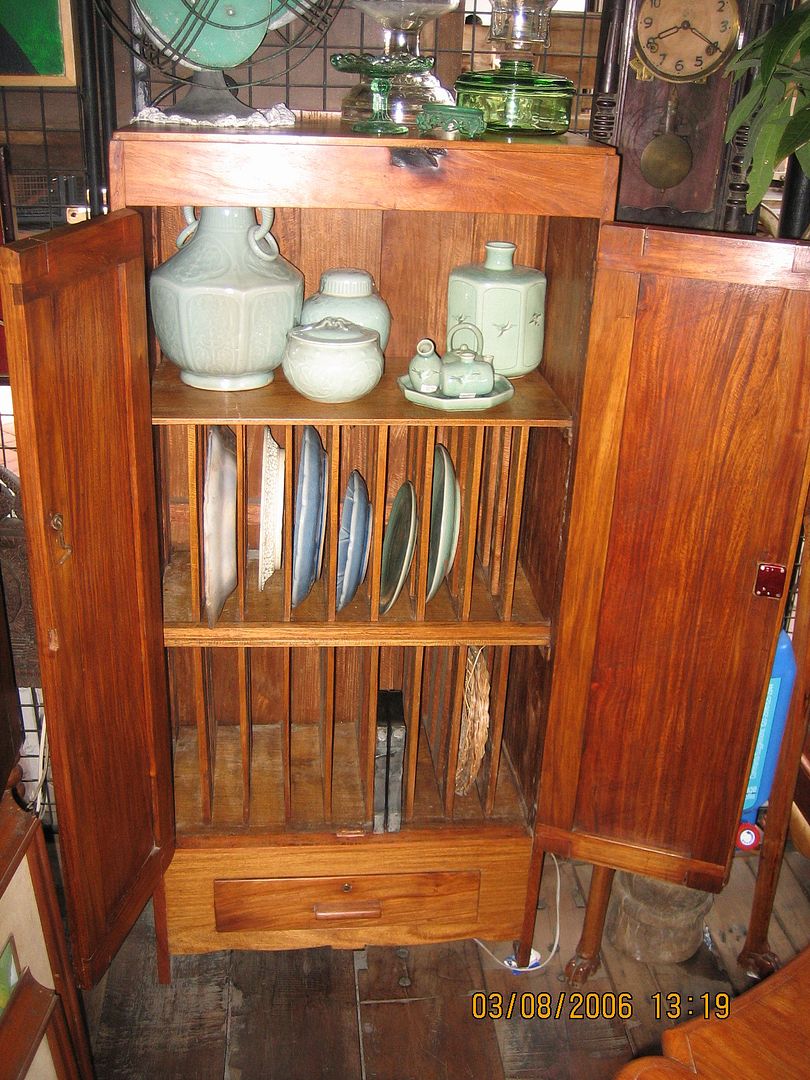
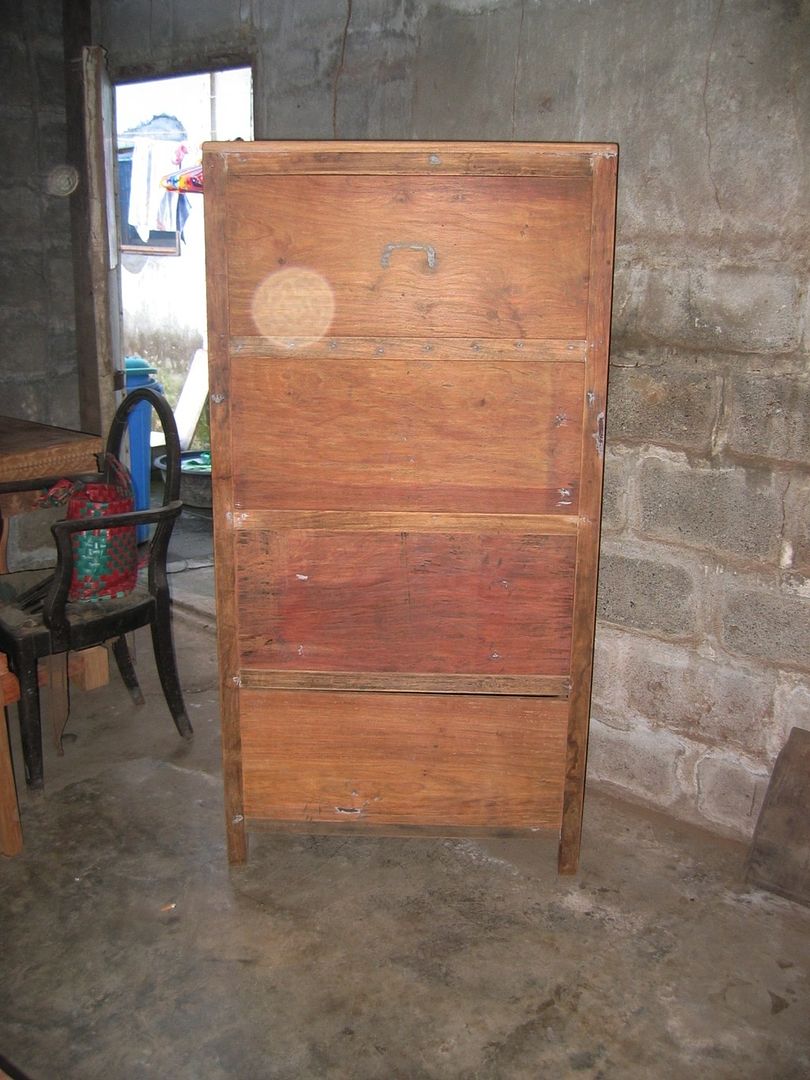
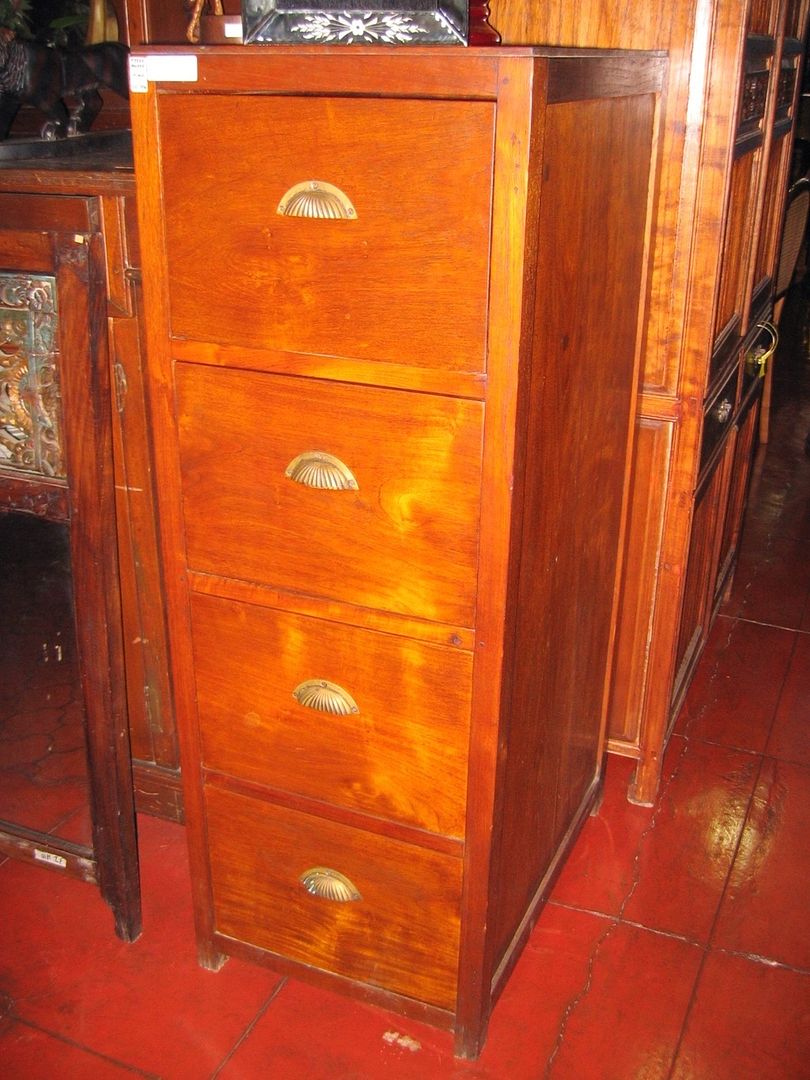

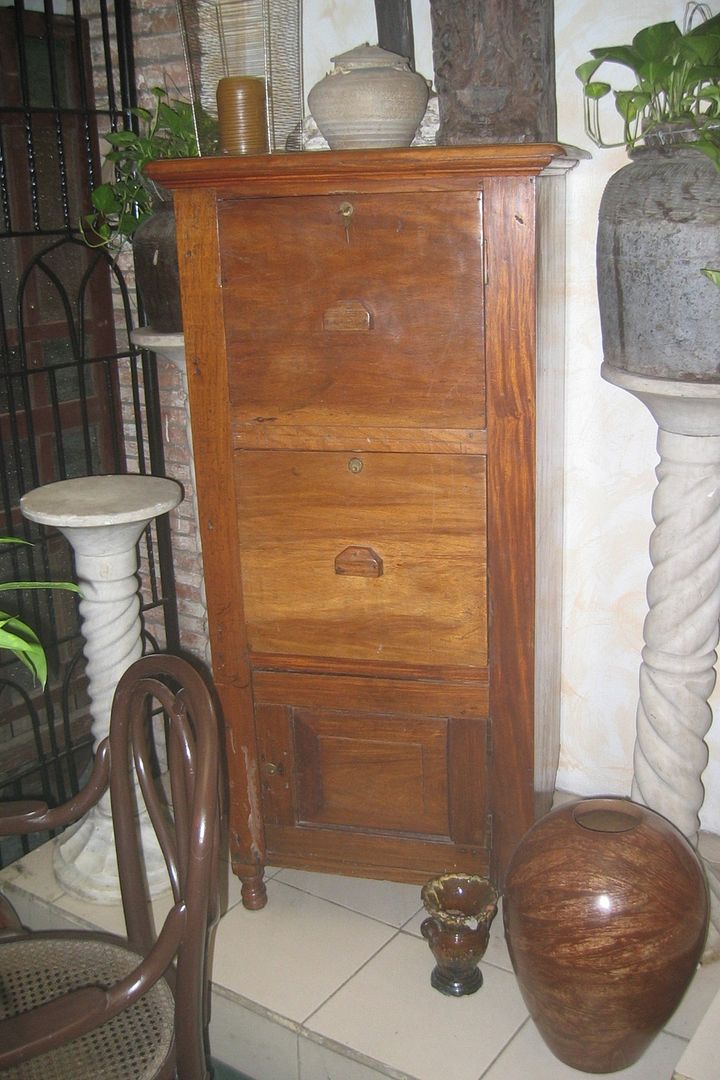
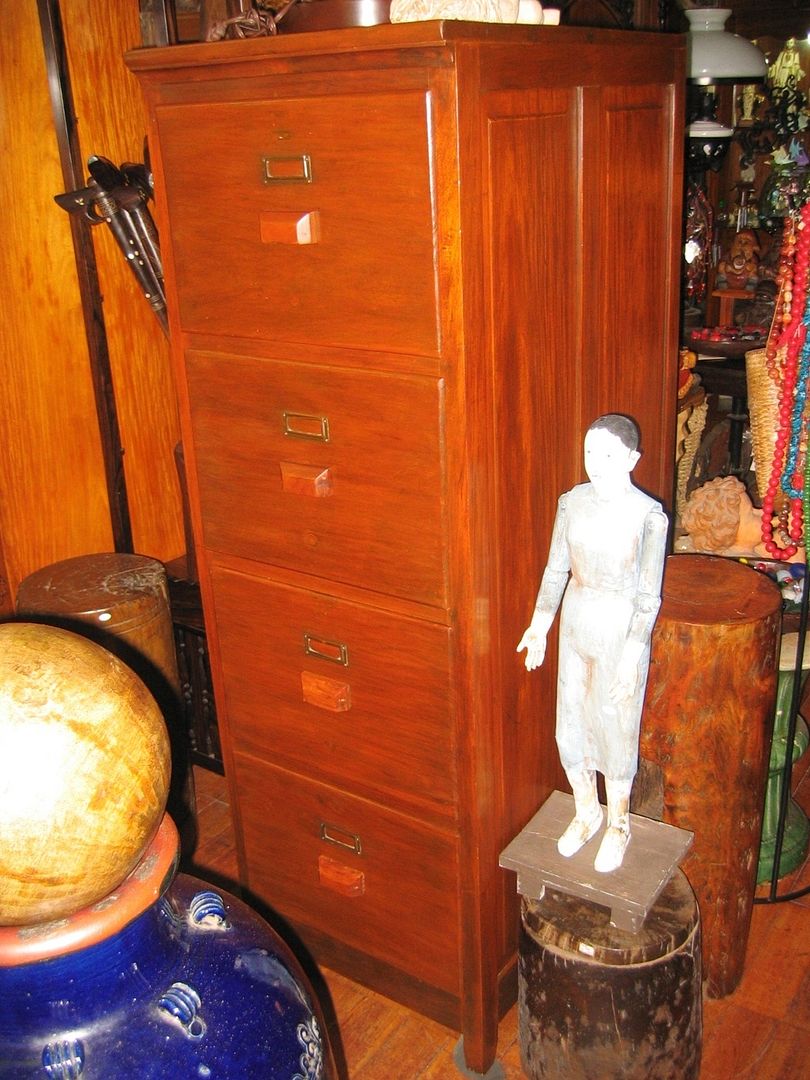
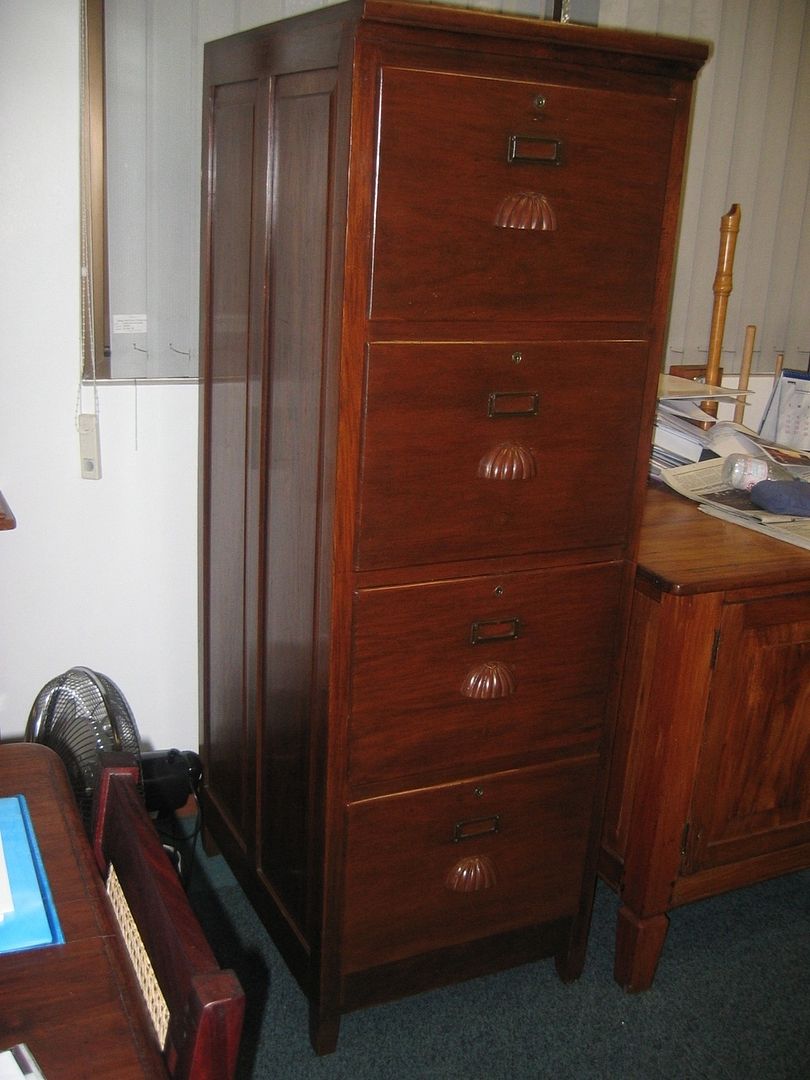
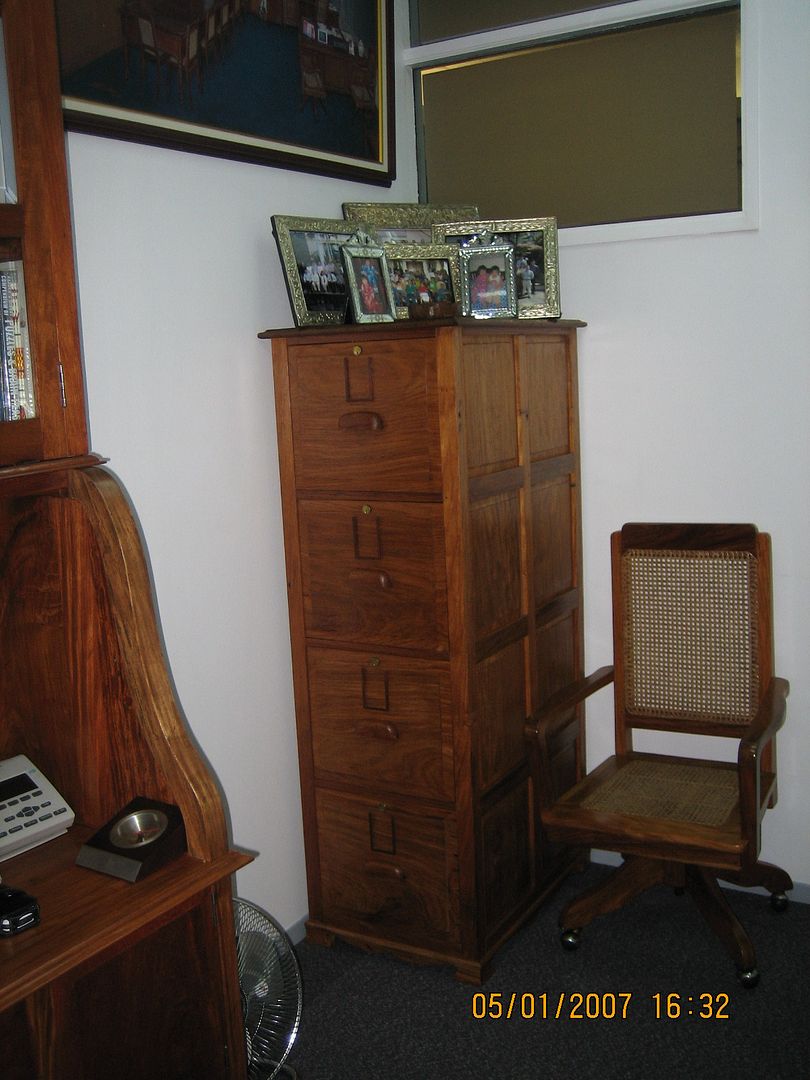



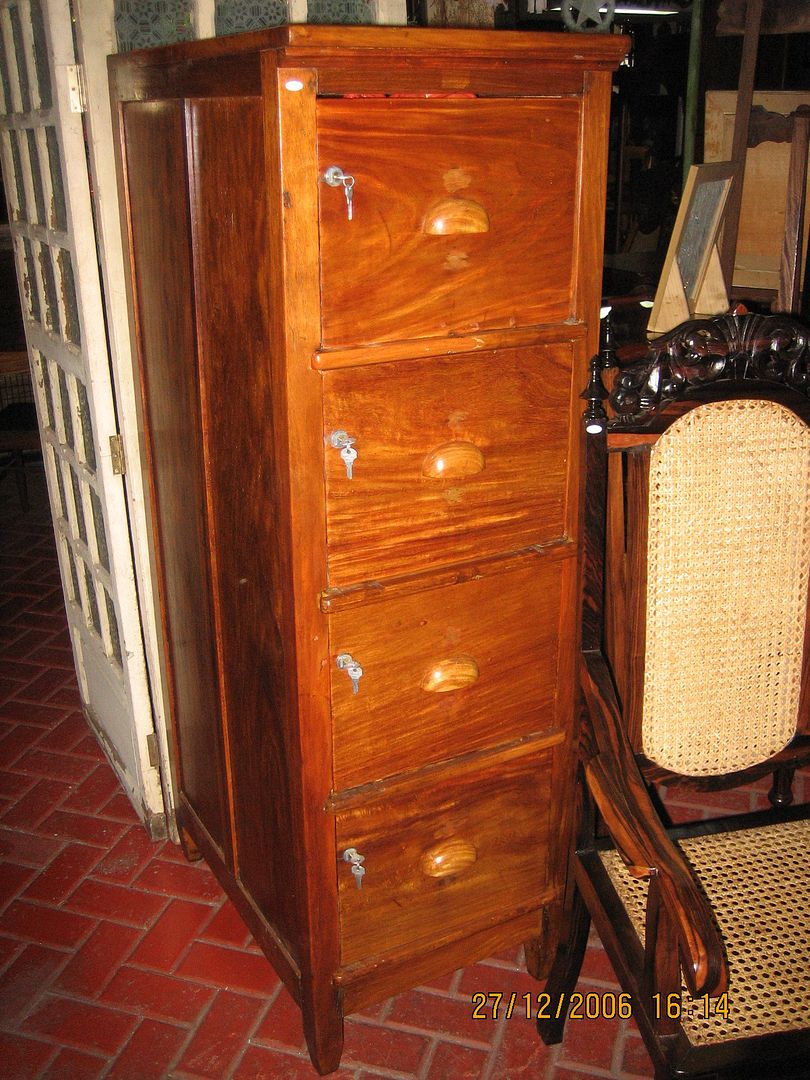

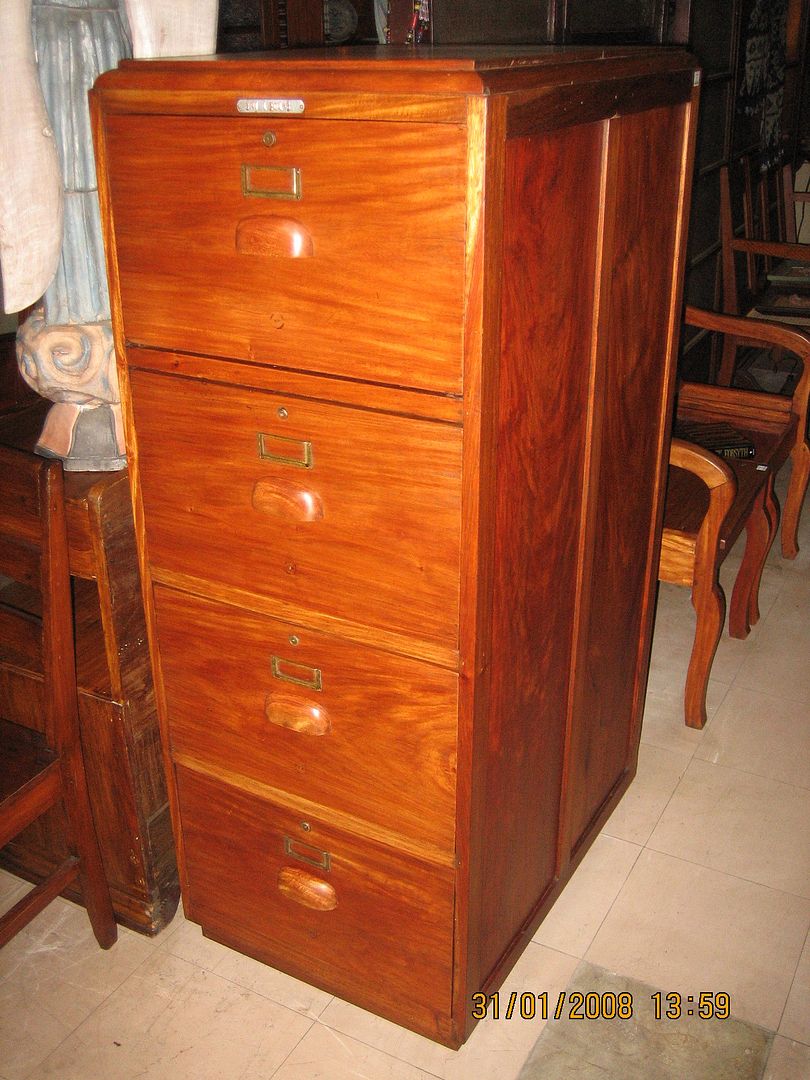
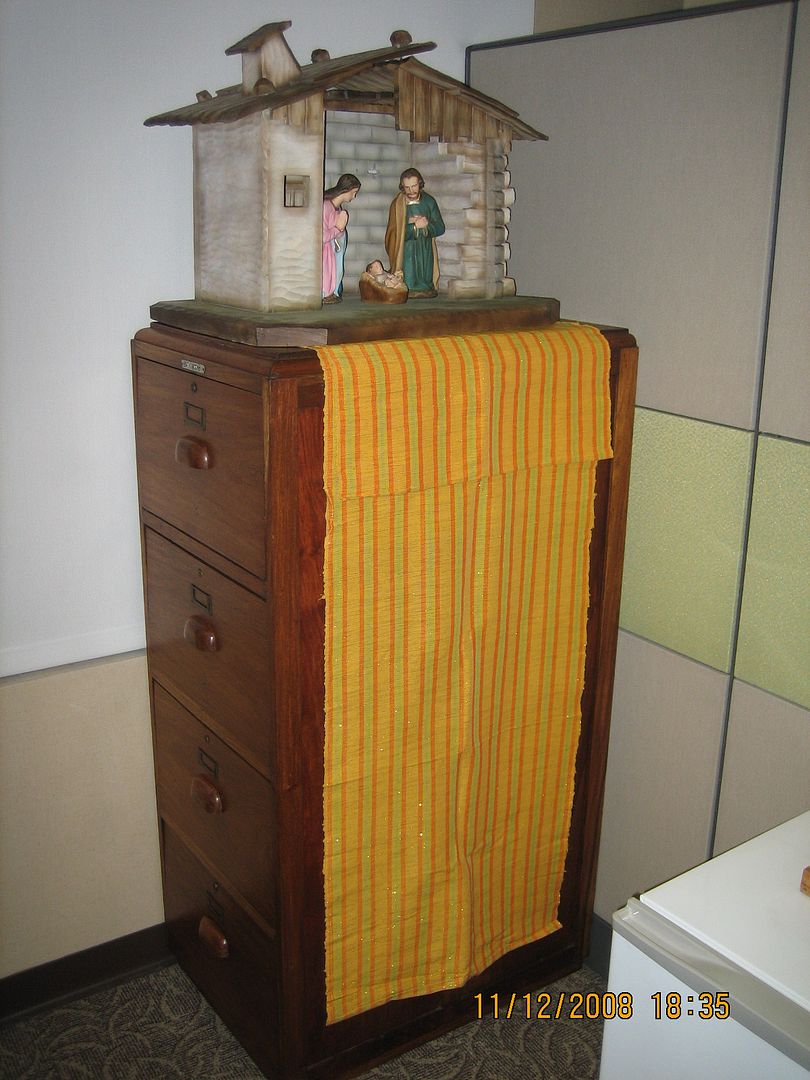






No comments:
Post a Comment